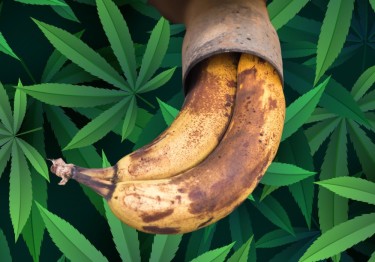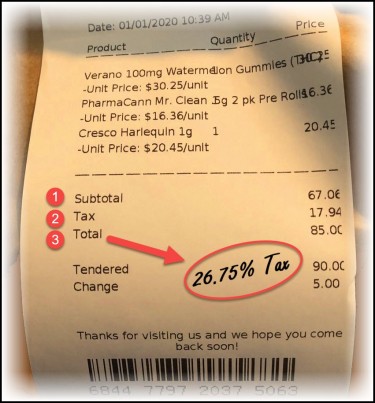Cannabis News
Are You a Cannabis Lifer? (Not the Same as a Stoner)
Published
4 months agoon
By
admin
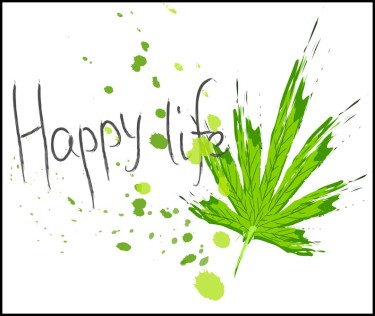
Are you a cannabis lifer?
Identity constructs and the substances we love…
When I first encountered cannabis as a young, wide-eyed enthusiast, I was instantly captivated by its allure. In a moment of youthful exuberance, I proclaimed, “I’m doing this shit for life!” Little did I know how prophetic those words would become, as I’ve now been consuming cannabis in various forms for over two decades.
However, as the years have passed, my relationship with this versatile plant has evolved significantly. The brash certainty of my youth has given way to a more nuanced perspective, prompting me to reexamine the concept of being a “cannabis lifer.” These days, I find myself unable to declare with the same unwavering conviction that I’ll be a lifelong consumer.
Perhaps my journey with cannabis will continue indefinitely, or maybe my method of consumption will shift. There’s even a possibility that I might forgo the euphoric experiences altogether, opting instead for raw, non-psychoactive cannabis. This introspection has led me to a profound realization: we often construct our identities around the things we love, and nowhere is this more evident than with cannabis.
The notion of being a “cannabis lifer” raises intriguing questions about dependency, socially accepted habits, and whether such a label inherently implies being a “stoner.” As we delve into this topic, we’ll explore the complex interplay between identity, substance use, and the evolving nature of our relationships with the things we hold dear.
Before we can delve into the concept of a “cannabis lifer,” it’s crucial to understand why and how we create the identities that navigate this world. Our sense of self is a complex construct, often shaped by our experiences, beliefs, and the roles we play in society.
When asked, “Who are you?”, many people respond with an activity, profession, or similar descriptor. “I’m a lawyer,” “I’m a stoner,” or “I’m an artist” are common replies. These responses reflect how we tend to define ourselves through our actions, occupations, or affiliations.
In esoteric circles, this aspect of our identity is known as the “ego.” It’s a construct of narratives created by the Self to navigate the world around us. The ego is neither inherently good nor bad; it’s simply a mechanism we require to exist within time and space. Without it, we would have no defining characteristics to call our own. Our identities would be vast and ever-changing, like the ocean, never at rest.
With the ego, we collapse certain internal narratives and package them as “myself.” This psychological software provides us with behavioral cues, limitations, and beliefs. However, various esoteric philosophies teach us that while useful, all of these are merely “constructs” – none of them truly represent the “Self.”
So, what is the Self? Depending on who you ask, the Self could be explained as the “unconscious” – not to be confused with the “subconscious.” While the ego is the “conscious operating system,” the unconscious is infinite, ever-expanding, and all-encompassing. In the unconscious, there is no difference between one thing and another; it’s the unifying field of all things.
The conscious mind, then, is a fragment of this infinite space that can work within the constructs of reality. It’s the part of us that interacts with the world, makes decisions, and forms memories. This is why we use “markers” such as profession, hobby, activity, or substance use to describe the Self. These markers provide a tangible way to understand and communicate our place in the world.
The problem arises when we forget that these are constructs and integrate them as fundamental aspects of our identity. When we say, “I am a lawyer” or “I am a stoner,” we’re not just describing what we do; we’re defining who we are. This integration can be limiting, as it may prevent us from exploring other aspects of our potential or adapting to new circumstances.
For instance, a lawyer who loses their license may experience a profound identity crisis if they’ve too closely integrated their profession into their sense of self. Similarly, a “stoner” who needs to quit cannabis for health reasons might struggle with who they are without the substance.
Understanding identity integration is crucial when examining the concept of a “cannabis lifer.” It reminds us that while our relationship with cannabis (or any other substance or activity) may be a significant part of our lives, it doesn’t define our entire being. We are more than our habits, our professions, or our preferred substances.
By recognizing the constructed nature of our identities, we can maintain a healthier relationship with the various aspects of our lives, including cannabis use. We can appreciate the role these elements play in shaping our experiences without allowing them to limit our potential for growth and change.
While food and drink certainly play a role in shaping our identities, cannabis stands out as one of the more powerful “identity crafters.” Its influence on personal identity is profound and multifaceted, often becoming deeply ingrained in the lives of its consumers.
Many, if not most, people who consume cannabis develop a strong affinity for it. This love often manifests in cultural markers, humorously captured in memes about the “cannabis starter pack” – complete with Bob Marley posters, pipes, rolling papers, and stoner flicks. While these stereotypes are meant to be humorous, they contain a grain of truth about how cannabis culture can shape personal identity.
Cannabis’s power as an identity crafter stems from its versatility. It’s a plant that seemingly has the ability to address a myriad of issues. Bored? Smoke weed. In pain? Try cannabis. Anxious? There’s a strain for that too. When a substance can placate so many areas of our lives, it quickly becomes an essential tool in our arsenal for navigating daily existence.
As cannabis becomes a regular part of life, many users begin to embrace the identity of a “stoner.” They proudly declare, “Yeah, I’m a stoner. I like weed… I’ll smoke it for life!” This integration of cannabis into one’s identity can be powerful and comforting, providing a sense of belonging and purpose.
However, this cannabis-centric identity doesn’t always consider life’s myriad possibilities. What if a high-paying job opportunity arises in a country where cannabis is strictly illegal? Would a self-proclaimed “lifer” risk severe legal consequences for their habit? Would they turn down the opportunity altogether because of their cannabis use? These scenarios highlight the potential limitations of too closely identifying with cannabis consumption.
When we examine our substance use, decisions, and identity descriptors through the lens of all possibilities, we might realize that we’re not necessarily “lifers.” Cannabis may be a significant part of our lives, but it doesn’t have to define us entirely. Conversely, some individuals may find that cannabis genuinely adds more to their lives than it takes away, affirming their “lifer” status.
Personal experiences often shape our relationship with cannabis over time. For instance, transitioning from wake-and-bake sessions to evening-only consumption demonstrates how our use patterns can evolve. These changes suggest that our future relationship with cannabis may be different from what we currently envision. Perhaps in 20 years, we’ll only be making extracts, smoking once a week, once a month, or solely during psychedelic experiences.
The power of cannabis to engrain itself in our lives is undeniable. However, it’s crucial to maintain a degree of separation between our core identity and our cannabis use. This separation allows us to continue searching for our true selves – the observer behind the various identities we construct.
Ultimately, while cannabis can be a valuable tool for self-exploration and personal growth, it shouldn’t become the entirety of who we are. By recognizing cannabis as one aspect of our multifaceted lives rather than our defining characteristic, we open ourselves to a broader range of experiences and possibilities. This balanced approach allows us to enjoy the benefits of cannabis while maintaining the flexibility to adapt and grow throughout life’s journey.
The question of whether being a “cannabis lifer” is good or bad doesn’t have a simple, universal answer. Some individuals will indeed consume cannabis throughout their entire lives, while others may only engage with it for a brief period. However, the real issue isn’t about duration but about the impact and relationship one has with the plant.
My personal stance is that being a cannabis lifer is neither inherently good nor bad. If cannabis genuinely enhances your life, whether through smoking, eating, or any other form of consumption, then continuing its use can be a positive choice. The key is to ensure that anything you do, including cannabis use, always provides a greater return on investment than the effort invested. In other words, the benefits should outweigh any potential drawbacks.
However, it’s crucial to maintain a separation between your identity and your cannabis use. You may smoke weed, but that doesn’t necessarily make you a “stoner.” You might consume cannabis, but that doesn’t mean you have to smoke it. The fundamental point is that you are not defined by what you consume. If that were true, as the humorous saying goes, most men would be pussies!
Being a cannabis lifer isn’t about proudly wearing the label or making it the center of your identity. It’s about recognizing cannabis as a tool or aspect of your life that brings value. Whether you use it for medical purposes, relaxation, creativity, or spiritual exploration, it’s important to maintain a balanced perspective.
Remember, your relationship with cannabis can evolve over time. What works for you now may change in the future, and that’s okay. The key is to remain self-aware, regularly evaluating the role cannabis plays in your life and adjusting as necessary.
Ultimately, if being a cannabis lifer means mindfully incorporating the plant into your life in a way that enhances your overall well-being, then it can be a positive choice. But if it means clinging to an identity that limits your growth or experiences, it might be time to reassess.
In the end, you are more than your habits or consumption patterns. Whether you’re a cannabis lifer or not, what matters most is that you’re living authentically and making choices that contribute positively to your life’s journey. Cannabis can be a part of that journey, but it shouldn’t be the destination.
CANNABIS FOR LIFE? READ ON…
You may like
Cannabis News
The Grinch Stole SAFE Banking from the Cannabis Industry This Christmas, Yet Again!
Published
8 hours agoon
December 22, 2024By
admin

The landscape of cannabis legislation in the United States has been a complex and evolving issue, particularly concerning banking regulations. As of December 2024, it has become official: the current Congress will not provide any protections for banks that serve state-legal marijuana businesses. This decision has significant implications for the cannabis industry, which continues to grow rapidly despite the lack of federal support. In this article, we will explore the reasons behind this decision, the implications for cannabis businesses, and the broader context of cannabis legalization in America.
The State of Cannabis Legalization
A Growing Industry
The cannabis industry has seen remarkable growth over the past decade. As of late 2024, 23 states and Washington D.C. have legalized recreational marijuana use, while 38 states allow medical marijuana. According to recent estimates, the legal cannabis market in the U.S. is projected to reach over $40 billion by 2025. This growth has been fueled by changing public perceptions of marijuana, increased advocacy for legalization, and significant tax revenues generated by state-legal cannabis sales.
The Banking Dilemma
Despite this rapid expansion, cannabis businesses face unique challenges, primarily due to their inability to access traditional banking services. Federal law classifies marijuana as a Schedule I controlled substance under the Controlled Substances Act. This classification creates a significant barrier for banks and financial institutions that wish to work with cannabis businesses, as they risk federal penalties for facilitating transactions related to an illegal substance.
As a result, many cannabis companies operate on a cash-only basis. This situation not only poses safety risks—such as increased theft and violence—but also limits these businesses’ ability to manage finances effectively, pay taxes electronically, and build credit histories.
Legislative Attempts at Reform
One of the most prominent legislative efforts aimed at addressing these banking issues is the Secure and Fair Enforcement (SAFE) Banking Act. First introduced in 2019, the SAFE Banking Act sought to provide protections for banks that serve legal cannabis businesses by preventing federal regulators from penalizing them for doing so.
The act garnered significant bipartisan support in both the House and Senate. In previous sessions of Congress, it passed multiple times in the House but faced hurdles in the Senate due to opposition from certain lawmakers who were concerned about broader implications of marijuana legalization.
In light of ongoing discussions about federal spending and budgetary priorities, advocates had hoped that some version of the SAFE Banking Act would be included in recent spending bills. However, during negotiations leading up to December 2024, a House committee led by Republicans removed any provisions related to marijuana banking protections from key spending legislation.
This decision reflects a broader trend within Congress where discussions around cannabis reform have become increasingly contentious. While there is still bipartisan support for certain aspects of cannabis legislation—particularly when it comes to medical use—more comprehensive reforms like banking protections have struggled to gain traction.
Implications for Cannabis Businesses
Continued Cash-Only Operations
The removal of banking protections means that many cannabis businesses will continue to operate primarily on a cash basis. This situation presents several challenges:
-
Safety Risks: Cash-only operations make cannabis dispensaries and cultivation facilities prime targets for theft and robber Employees often have to handle large amounts of cash daily, increasing their risk of violence.
-
Operational Inefficiencies: Without access to banking services, businesses cannot easily manage payroll or pay bills electronically. This inefficiency can lead to operational delays and increased costs.
Impact on Public Safety
Advocates argue that providing banking access would enhance public safety by reducing the amount of cash circulating within the community. By allowing cannabis businesses to deposit their earnings into banks, it would minimize the risks associated with cash transactions, making both employees and customers safer.
Moreover, having a transparent financial system would help law enforcement track illicit activities more effectively. Currently, without proper banking oversight, there are concerns that some cash-only operations may be involved in money laundering or other illegal activities.
Politics and Public Opinion
Changing Attitudes Toward Cannabis
Public opinion on marijuana legalization has shifted dramatically over recent years. According to various polls, a significant majority of Americans now support legalizing marijuana for both medical and recreational use. This shift has put pressure on lawmakers to address outdated federal policies regarding cannabis.
Despite this growing acceptance among the public, political divisions remain strong within Congress regarding how best to approach cannabis reform. Some lawmakers advocate for full legalization at the federal level, while others prefer a more cautious approach that prioritizes regulation over outright legalization.
The Role of Advocacy Groups
Advocacy groups play a crucial role in pushing for legislative change regarding cannabis banking protections. Organizations such as the National Cannabis Industry Association (NCIA) and Americans for Safe Access (ASA) have been vocal proponents of reforming banking laws to support state-legal cannabis businesses.
These groups have mobilized public support through campaigns highlighting the safety risks associated with cash-only operations and advocating for policies that promote financial inclusion for cannabis entrepreneurs.
Future Prospects for Cannabis Banking Reform
While current congressional efforts have stalled regarding marijuana banking protections, there are still potential avenues for reform:
-
Incremental Reforms: Rather than pursuing comprehensive federal legislation like the SAFE Banking Act all at once, lawmakers may consider incremental reforms that address specific issues related to banking access without fully legalizing marijuana at the federal level.
The Role of Public Awareness
As public awareness about the challenges faced by cannabis businesses grows, there may be increased pressure on lawmakers to act decisively on this issue. Continued advocacy efforts can help ensure that banking reform remains a priority on Congress’s agenda.
Conclusion
The decision by Congress not to include marijuana banking protections in its current spending bill underscores ongoing tensions surrounding cannabis legislation in America. While public opinion increasingly favors legalization and reform, political divisions continue to hinder progress on critical issues such as banking access for state-legal marijuana businesses.
As the industry continues to grow despite these challenges, stakeholders must remain vigilant in advocating for change while exploring alternative solutions at both state and federal levels. The future of cannabis banking reform remains uncertain; however, with continued advocacy and public support, there is hope that meaningful progress can be made in addressing these pressing issues facing one of America’s fastest-growing industries.
SAFE BANKING SINCE 2018, WHAT A FAILURE, READ ON…
SAFER BANKING ACT FAILS AGAINS, SAME OF BANANA IN THE TAILPIPE!
Cannabis News
HHC vs. Delta 9: Differences & Similarities
Published
2 days agoon
December 20, 2024By
admin

Cannabis has so many compounds, and two that have been making the rounds lately are HHC and Delta 9 THC. They’re not the same thing, even though they’re both cannabinoids that interact with the body’s endocannabinoid system. Some people want a mild, steady experience, while others might be looking for something more intense. Understanding these two can help you figure out what’s right for you.
What Is HHC?
HHC, short for hexahydrocannabinol, is a hydrogenated version of THC. It’s not something you’d find naturally in large amounts in cannabis plants. Instead, it’s made through a process that adds hydrogen molecules to THC. The result? A more stable compound that’s less prone to breaking down when exposed to heat or UV light.
How HHC Is Made
Think of it like a science experiment. HHC is usually created in a lab by taking Delta 9 or Delta 8 THC and using hydrogenation—basically, combining it with hydrogen under pressure and in the presence of a catalyst. This process changes its structure while keeping its effects somewhat similar to THC.
Common Uses and Effects of HHC
People who use HHC say it’s somewhere between Delta 8 and Delta 9 in terms of effects. It’s often described as relaxing but without being overly sedative. You might feel a light buzz, reduced stress, or mild euphoria. Some even claim it helps with discomfort or improving sleep, but solid research is still catching up. Since it’s less potent than Delta 9, it’s often favored by those who want a manageable experience without the strong psychoactive punch.
If you’re interested in trying HHC and Delta 9 for yourself, check out their wide range of products at trycandycloud.com. They’ve got everything from gummies to disposable vapes, all crafted for a smooth experience.
What Is Delta 9 THC?
Delta 9 THC is the main psychoactive compound in cannabis. It’s the reason you feel “high” when you use weed. Chemically speaking, Delta 9 has a double bond in its ninth carbon chain, which plays a big role in how it interacts with your brain.
Natural Occurrence in Cannabis
This one is straightforward: Delta 9 is found in high concentrations in marijuana plants. It’s what most people think of when they hear “THC.” Unlike HHC, there’s no need for a lab process—it’s already there. Hemp plants, however, contain much lower levels of Delta 9 THC, which is why it’s primarily extracted from marijuana.
Common Uses and Effects of Delta 9 THC
The effects of Delta 9 are well-documented. Depending on the dose, you might feel euphoria, increased appetite, or deep relaxation. For medical users, it’s often used to manage chronic pain, nausea, and other conditions. It’s also been studied for its potential benefits in anxiety relief, though higher doses might have the opposite effect, causing paranoia. Delta 9 THC is versatile, but it’s not without its risks, particularly for new users or those sensitive to its psychoactive effects.
Key Differences Between HHC and Delta 9 THC
Chemical Structure and Composition
The main difference is in their structure. Delta 9 THC has that iconic double bond, while HHC’s hydrogenation makes it more stable. This difference might not mean much to the average person, but it’s why HHC is less likely to degrade over time.
Potency Levels
Delta 9 THC is generally more potent. HHC might require a higher dose to get a comparable effect, but some people prefer its lighter touch. Potency differences can also depend on the method of consumption, with edibles typically providing a stronger, longer-lasting effect compared to vaping or smoking.
Duration of Effects
Both last a few hours, but some users report that HHC’s effects fade more gradually. Delta 9, on the other hand, can have a sharper comedown. HHC’s gradual fade makes it appealing for those who want a smooth end to their experience.
Benefits and Drawbacks of HHC and Delta 9 THC
HHC: Pros and Cons
Pros:
- More stable, so it lasts longer on the shelf.
- Effects are milder, making it less overwhelming for beginners.
- Can be a functional option for daytime use.
Cons:
- Limited research, so we don’t know its full impact yet.
- Availability can be hit or miss depending on where you live.
- Legal gray area in many regions.
Delta 9 THC: Pros and Cons
Pros:
- Well-studied with established medical uses.
- Widely available in areas where cannabis is legal.
- Stronger effects make it ideal for experienced users or those with high tolerance.
Cons:
- Higher chance of side effects like anxiety.
- More likely to show up on drug tests.
- Shorter shelf life compared to HHC.
Frequently Asked Questions (FAQ)
Q. Is HHC safer than Delta 9 THC?
Not enough research exists to say definitively, but HHC’s milder effects might make it feel safer to some users.
Q. Will HHC or Delta 9 THC show up on a drug test?
Yes, both can potentially show up on a drug test, so use with caution if that’s a concern.
Q. Which one is better for recreational use?
That depends on your preferences. HHC is great for a mellow time, while Delta 9 is better if you’re looking for something more intense.
HHC vs. Delta 9: Choosing the Right One for You
The choice comes down to what you’re after. If you want a milder, more laid-back experience, HHC might be a good option. On the other hand, if you’re looking for something stronger or need it for medical reasons, Delta 9 is the way to go. It also depends on what’s legal and available where you are. And always consider your tolerance levels and experience before diving in. If you’re unsure, consult with a knowledgeable dispensary staff.
Resources:
Cannabis News
What Federally Illegal Drug Has Created Almost $10 Billion in Sales Tax Revenue for States in the Last 40 Months?
Published
2 days agoon
December 20, 2024By
admin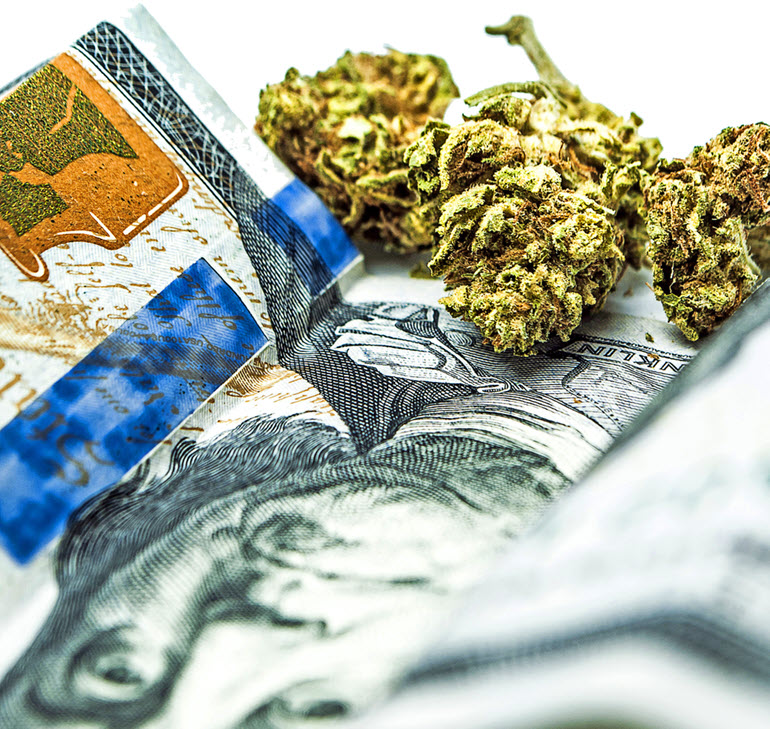
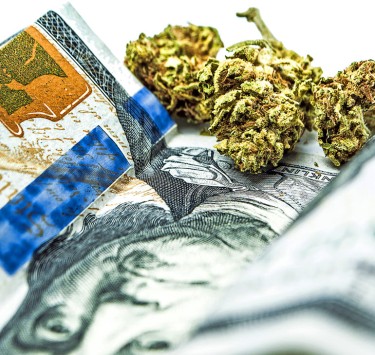
In a significant development for the burgeoning cannabis industry, the U.S. Census Bureau has reported that states across the nation have collectively amassed over **$9.7 billion** in tax revenue from marijuana sales since mid-2021. This figure underscores the economic impact of legalized cannabis and highlights the growing acceptance of marijuana as both a recreational and medicinal substance in various states. As more states move toward legalization, the financial implications both positive and negative are becoming increasingly evident.
The Landscape of Cannabis Legalization
The journey toward cannabis legalization in the United States has been long and complex. Initially criminalized in the early 20th century, cannabis began to regain acceptance in the late 20th century, particularly for medical use. The first state to legalize medical marijuana was California in 1996, setting a precedent that many states would follow.
By 2012, Colorado and Washington became the first states to legalize recreational cannabis, paving the way for a wave of legalization efforts across the country. As of now, more than 20 states have legalized recreational marijuana, while over 30 states allow medical use. This shift reflects changing public attitudes toward cannabis and recognition of its potential benefits.
Economic Implications of Legalization
The legalization of cannabis has not only transformed social norms but has also created a substantial economic impact. States that have embraced legalization have seen significant increases in tax revenue, job creation, and investment opportunities.
According to the latest Census Bureau report, states like California, Colorado, Illinois, and Michigan have emerged as leaders in cannabis tax revenue generation. These states have implemented various tax structures on marijuana sales, including excise taxes, sales taxes, and local taxes. The revenue generated is often earmarked for essential public services such as education, healthcare, infrastructure improvements, and drug rehabilitation programs.
Breakdown of Tax Revenue by State
As the largest legal cannabis market in the United States, California has been at the forefront of marijuana tax revenue generation. Since mid-2021, California has contributed approximately $2.5 billion to state coffers from cannabis taxes. This revenue is derived from both recreational and medical marijuana sales.
California’s tax structure includes a 15% excise tax on retail sales, along with local taxes that can vary significantly by city and county. The state has allocated a portion of these funds to various programs aimed at addressing issues related to drug abuse and public health.
Colorado was one of the pioneers in cannabis legalization and continues to serve as a model for other states. Since mid-2021, Colorado has generated around $1.8 billion in tax revenue from marijuana sales. The state imposes a 15% excise tax on wholesale marijuana transactions and a 2.9% sales tax on retail sales.
The revenue generated from cannabis taxes has been instrumental in funding education initiatives through the Public School Fund, as well as supporting mental health programs and substance abuse treatment services.
Illinois has seen remarkable growth in its cannabis market since legalizing recreational use in January 2020. In just two years, Illinois has collected approximately $1 billion in tax revenue from marijuana sales. The state imposes a tiered excise tax based on the potency of the product, ranging from 10% to 25%.
The funds collected are allocated to various initiatives, including community reinvestment programs aimed at addressing social equity issues related to past drug enforcement practices.
Michigan’s cannabis market has also flourished since legalization. Since mid-2021, Michigan has generated about $700 million in tax revenue from marijuana sales. The state’s tax structure includes a 10% excise tax on recreational marijuana and a 6% sales tax.
The revenue is utilized for various purposes, including education funding and support for local governments impacted by legalization.
Broader Economic Impact
The legalization of cannabis has led to significant job creation across various sectors. According to industry reports, the legal cannabis market supports hundreds of thousands of jobs nationwide—from cultivation and processing to retail and distribution. As more states legalize marijuana, this trend is expected to continue.
With the growth of the legal cannabis industry comes increased investment opportunities. Entrepreneurs are entering the market at an unprecedented rate, leading to innovations in product development, marketing strategies, and distribution channels. This influx of investment not only benefits individual businesses but also stimulates local economies.
Social Equity Considerations
While the financial benefits of cannabis legalization are clear, it is essential to address social equity issues that arise alongside this new industry. Many states have recognized that communities disproportionately affected by past drug enforcement policies should benefit from legalization efforts.
States like Illinois have implemented community reinvestment programs that allocate a portion of cannabis tax revenues to support communities impacted by previous drug laws. These funds can be used for education initiatives, job training programs, and mental health services—aiming to rectify historical injustices associated with cannabis prohibition.
In addition to financial support for communities affected by past policies, some states are also working to create equitable licensing opportunities for individuals from those communities. By prioritizing applications from minority-owned businesses or those directly impacted by previous drug laws, states can foster a more inclusive cannabis industry.
Challenges Ahead
Despite the significant progress made through legalization efforts, challenges remain on both state and federal levels.
Federal Legalization Uncertainty
One major hurdle is the ongoing conflict between state and federal laws regarding cannabis. While many states have legalized marijuana for recreational or medical use, it remains classified as a Schedule I substance under federal law. This discrepancy creates complications for businesses operating legally at the state level but facing potential federal prosecution.
Efforts toward federal legalization or decriminalization have gained traction recently; however, progress remains slow due to political divisions and differing opinions on drug policy reform.
Regulatory Hurdles
As more states enter the legal cannabis market, regulatory frameworks must evolve to ensure consumer safety while promoting fair competition among businesses. States face challenges related to product testing standards, labeling requirements, advertising restrictions, and taxation policies that can impact market dynamics.
Conclusion
The U.S. Census Bureau reports that states have collected over $9.7 billion in marijuana tax revenue since mid-2021, highlighting the significant economic impact of cannabis legalization. As public acceptance grows, more states are likely to pursue legalization. Despite ongoing challenges, including federal regulations and social equity issues, legalized cannabis is poised to remain a vital part of state economies. Collaboration among government officials, business leaders, and community advocates will be essential for fostering an equitable and sustainable cannabis industry. This evolving landscape not only presents economic growth opportunities but also addresses historical injustices tied to drug policy enforcement, shaping the future of cannabis legislation in the U.S.
WHAT STATES HAVE THE HIGHEST WEED TAXES? READ ON…

The Grinch Stole SAFE Banking from the Cannabis Industry This Christmas, Yet Again!

HHC vs. Delta 9: Differences & Similarities
DOJ Asks Federal Court To Deny Doctors’ Lawsuit Over Marijuana Rescheduling Hearing To Avoid ‘Undue Delay’

What Federally Illegal Drug Has Created Almost $10 Billion in Sales Tax Revenue for States in the Last 40 Months?

Three Wise Men Give Marijuana Strain Gift Suggestions

Tasmanian Hemp Assoc Bids Goodbye To Australian Hemp Council

Teen Marijuana Use Continues To Drop With Legalization

The Best Cocktails To Make You Feel Festive

Cannabis predictions for 2025: Low prices, high taxes, and hash

Oregon Cannabis: State of the State (2024)

Distressed Cannabis Business Takeaways – Canna Law Blog™

United States: Alex Malyshev And Melinda Fellner Discuss The Intersection Of Tax And Cannabis In New Video Series – Part VI: Licensing (Video)

What you Need to Know

Drug Testing for Marijuana – The Joint Blog

NCIA Write About Their Equity Scholarship Program

It has been a wild news week – here’s how CBD and weed can help you relax

Cannabis, alcohol firm SNDL loses CA$372.4 million in 2022

A new April 20 cannabis contest includes a $40,000 purse

Your Go-To Source for Cannabis Logos and Designs

UArizona launches online cannabis compliance online course
Trending
-

 Cannabis News2 years ago
Cannabis News2 years agoDistressed Cannabis Business Takeaways – Canna Law Blog™
-

 One-Hit Wonders2 years ago
One-Hit Wonders2 years agoUnited States: Alex Malyshev And Melinda Fellner Discuss The Intersection Of Tax And Cannabis In New Video Series – Part VI: Licensing (Video)
-

 Cannabis 1012 years ago
Cannabis 1012 years agoWhat you Need to Know
-

 drug testing1 year ago
drug testing1 year agoDrug Testing for Marijuana – The Joint Blog
-

 Education2 years ago
Education2 years agoNCIA Write About Their Equity Scholarship Program
-

 Cannabis2 years ago
Cannabis2 years agoIt has been a wild news week – here’s how CBD and weed can help you relax
-

 Marijuana Business Daily2 years ago
Marijuana Business Daily2 years agoCannabis, alcohol firm SNDL loses CA$372.4 million in 2022
-

 California2 years ago
California2 years agoA new April 20 cannabis contest includes a $40,000 purse





